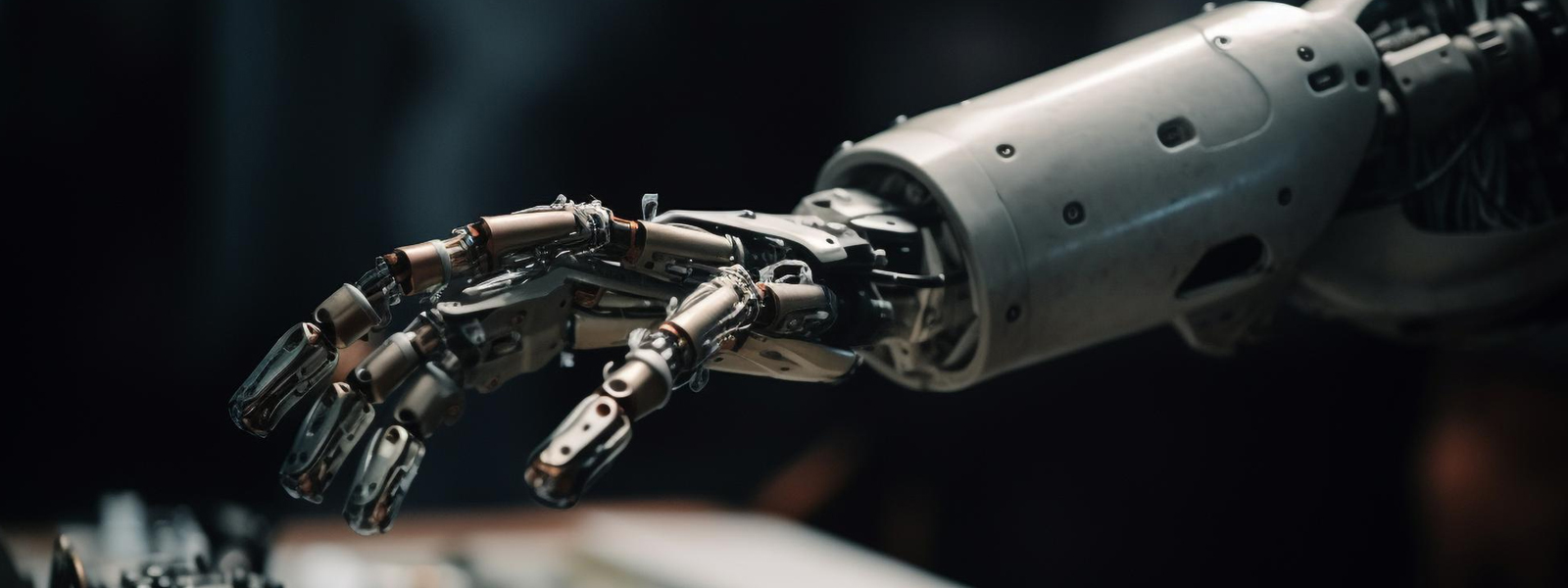AGP China Technology Report - Robotic Manipulation (Arms, Grippers, End Effectors)
Table of Contents
Page Section
03 Technology Overview
06 Historical Development Timeline
08 Product Differentiation
14 China Technology Ecosystem
17 Sino-Foreign Collaboration
20 Common Applications In China
25 Government Policy Support
28 Impact On Market Incumbents
30 Final Conclusion
31 Appendices
1.1 Global Snapshot
Definition and Key Technologies
Robotic manipulation involves the design and application of robotic arms, grippers, and end effectors to perform tasks traditionally executed by human hands. These components are integral to industrial automation, enabling robots to interact with objects through grasping, holding, and manipulating. Key technologies include:
- Actuators: Devices that convert energy into mechanical motion, essential for the movement of robotic arms and grippers.
- Sensors: Instruments that provide feedback on position, force, and proximity, enhancing precision and adaptability.
- Control Systems: Software and hardware that govern the operation of robotic manipulators, ensuring coordinated and efficient performance.
- Materials and Design: Advances in lightweight and durable materials, along with ergonomic designs, improve the functionality and efficiency of robotic manipulators.
Global Benchmarks and Market Overview
Leading examples of robotic manipulation technologies include:
- Boston Dynamics' Atlas: A humanoid robot with advanced manipulation capabilities, demonstrating agility and dexterity in complex tasks.
- ABB's YuMi: A collaborative robot designed for small parts assembly, featuring dual arms and precise manipulation abilities.
The global market for robotic end effectors is experiencing significant growth. In 2023, the market was valued at approximately USD 2.3 billion and is projected to reach USD 4.3 billion by 2028, registering a compound annual growth rate (CAGR) of 13.5%. This expansion is driven by increasing automation across industries, advancement in robotics technology, and the rising adoption of collaborative robots.
1.2 China Snapshot
Market Position and Domestic Capabilities
China has emerged as a dominant player in the robotic manipulation sector, both as a consumer and producer. The country's rapid industrialization and emphasis on automation have led to substantial investments in robotics. Chinese manufacturers have developed competencies in core components such as harmonic drives and precision actuators, reducing reliance on imports and enhancing the competitiveness of domestic products.
Leading Firms and Product Deployments
Prominent Chinese companies in this sector include:
- UBTECH Robotics: Known for developing humanoid robots with advanced manipulation capabilities, utilized in education and service industries.
- Unitree Robotics: Specializes in quadruped robots with sophisticated end effectors, applied in logistics and inspection tasks.
- Xiaomi: Entered the robotics market with products featuring innovative grippers and arms, targeting consumer and industrial applications.
These firms offer products at competitive price points, facilitating widespread adoption across various sectors such as manufacturing, healthcare, and logistics.
National Policies and Industrial Targets
The Chinese government has implemented policies to bolster the robotics industry. The Ministry of Industry and Information Technology (MIIT) released the "Guiding Opinions on the Development of the Robot Industry" in 2023, setting ambitious targets for innovation, market expansion, and international competitiveness. These policies aim to position China as a global leader in robotics by fostering research and development, standardization, and strategic investments.
Cost-Performance Edge and Application Scaling
China's robotics industry benefits from a cost-performance advantage, attributed to efficient manufacturing processes and economies of scale. This edge enables the deployment of robotic manipulators in small and medium-sized enterprises (SMEs), accelerating automation across diverse industries. Applications range from assembly lines in electronics manufacturing to automated warehousing solutions in e-commerce.
Role in Advancing "New Productive Forces"
Robotic manipulation technologies are pivotal in advancing China's "new productive forces" (新质生产力), a concept emphasizing innovation-driven economic growth. By integrating advanced robotics into production processes, China aims to enhance productivity, quality, and global competitiveness.
Link to Demographic Shifts and Industrial Upgrading
China's aging population and rising labor costs necessitate increased automation. Robotic manipulators address labor shortages and support industrial upgrading by enabling smart factories, enhancing elder-care services, and optimizing logistics operations. These developments align with national goals of modernizing industries and sustaining economic growth.
1.3 Strategic Significance and Use Cases
Global and China-Specific Market Estimates
The global robotic end effector market is projected to grow from USD 2.3 billion in 2023 to USD 4.3 billion by 2028, with a CAGR of 13.5%. In China, the market is expected to expand significantly, driven by government initiatives and increasing adoption across industries.
Growth Scenarios
Three potential growth scenarios for the robotic manipulation market include:
- High Growth: Rapid adoption driven by technological breakthroughs, favorable policies, and decreasing costs.
- Medium Growth: Steady expansion supported by gradual technological advancements and moderate policy support.
- Low Growth: Slower growth due to economic uncertainties, technological challenges, or limited policy incentives.
5-Year CAGR Estimates
Various sources project a 5-year CAGR ranging from 11.4% to 13.5%, depending on factors such as adoption rates, technological developments, and regional market dynamics.
Market Breakdown
The market can be segmented by:
- Application Domain: Manufacturing, healthcare, logistics, and service industries.
- Customer Segment: Large enterprises, SMEs, and startups.
- Geography: North America, Europe, Asia-Pacific, and other regions.
Strategic Implications
The advancement of robotic manipulation technologies holds strategic significance for policymakers, investors, and R&D stakeholders. For policymakers, fostering a supportive environment through incentives and regulations can accelerate adoption and innovation. Investors can capitalize on the growing market by funding companies developing cutting-edge solutions. R&D stakeholders have opportunities to address challenges such as enhancing dexterity, reducing costs, and improving human-robot collaboration.
In conclusion, robotic manipulation technologies are at the forefront of industrial automation, offering transformative potential across various sectors. China's proactive approach positions it as a key player in this evolving landscape, with significant implications for global markets and technological progress.
AGP Insights
Download PDF.
Your PDF report was sent successfully to your inbox!
Related Insights.











